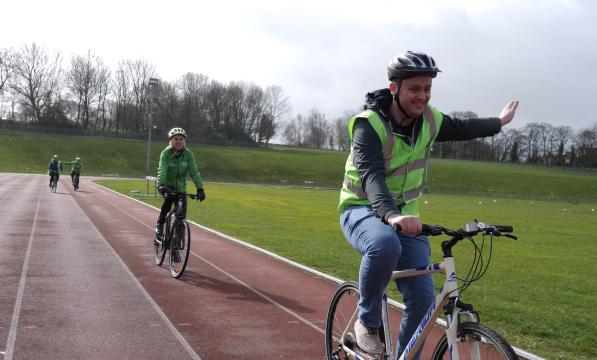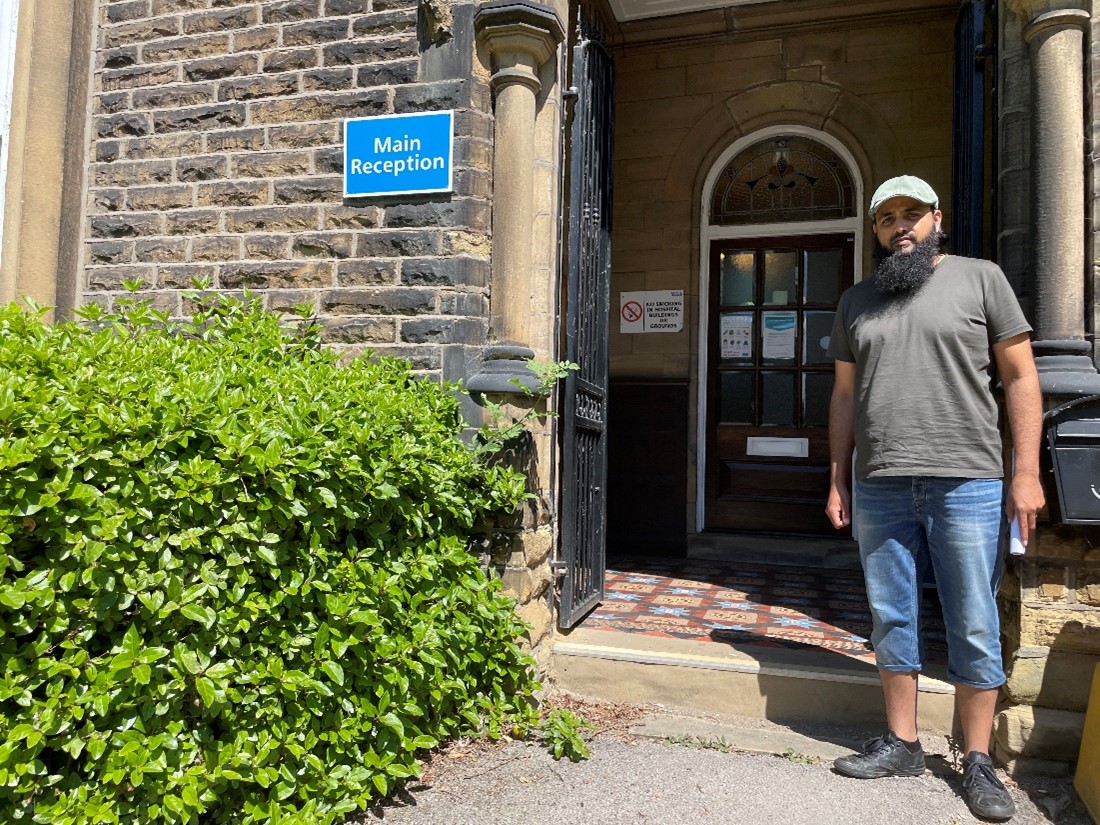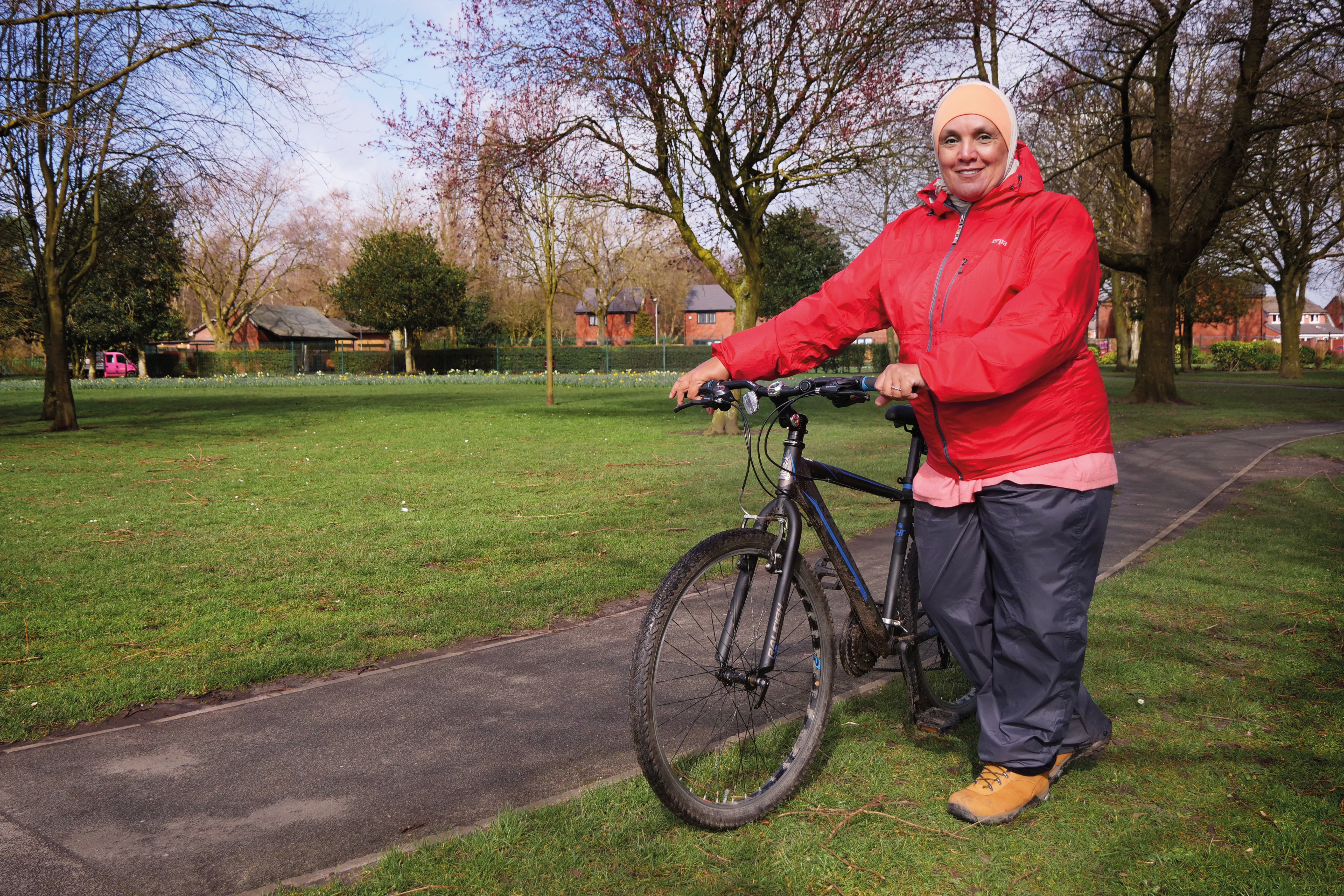Instructor’s view: How we deliver Cycle for Health courses

Last year, the Department for Transport announced it was allocating £13.9m of funding to a new ‘cycling on prescription’ programme to be trialled across England.
The local authorities taking part in the trial would be able to offer active travel social prescribing, whereby GPs could prescribe cycling, walking or wheeling to boost patients’ mental and physical wellbeing to those most in need, while tackling health inequalities.
Social prescribing isn’t a new idea: Cycling UK has been delivering its groundbreaking Cycle for Health programme, funded by the West Yorkshire Combined Authority’s CityConnect programme, for eight years. It is designed to offer adults with poor mental or physical health a route into regular physical activity.
But what does this look like in practice and who delivers the courses? We spoke to our cycling instructors to get their view from the ground, and a glimpse of the difference they have seen it make to people.
Kate Wiley, one of Cycling UK’s 100 Women in Cycling 2021, delivers sessions in Kirklees. She’s been a ride leader and an instructor for years and loves the freedom cycling offers, but when she first started riding regularly as an adult, she had “absolutely no clue” how to use her gears or how to get up a hill, and no one to ask.
Kate was given an opportunity to join an evening course by the council. This made her realise what a great thing being an instructor is, and now she loves being able to help other people learn to ride. “If I’ve had a bad day or if I’ve had, you know, a bit of a tiring day, just going out for a bike ride or riding home from work gives you that time to recharge yourself.”
Long may it continue. What these sessions do for people is immeasurable
Kate Wiley, Cycle for Health instructor
“I love, I absolutely love getting someone on the course who cannot ride at all, and just being with them and coaching them till they set off and pedal on their own, and that smile and sometimes tears of joy that we get makes it all worthwhile.”
Some female course participants report having grown up being told women don’t ride bikes, and it’s Kate’s favourite thing to film their successes so they can show their families.
So what does a typical session look like?
Flexibility is key; there are always two instructors so the group can be split depending on what level participants are at. Each session is tailored to who turns up, and being able to split it means one group can go through basic skills such as road positioning, while the other goes for a ride.
Courses progress as slowly as participants need to go – if a ride needs to be shortened, it is. But all participants are always supportive of one another.

“The nicest thing we can get is that people want to continue [riding].” A particular Sunday morning group has now become confident enough to organise a ride for themselves since they know the routes, and as more people progress, more are joining this group.
Putting those smiles on people’s faces doesn’t always come without hurdles. “People’s vulnerabilities come in all different forms, and their concerns. What is important for one person is not important for somebody else, but you learn to sort of spot the signs and work out if somebody’s not quite sure of what they’re doing”.
People don’t always feel comfortable saying they haven’t quite got something, so reading body language is important. “But I’ve learned if you can help somebody get through something, they’ll blossom.”
Being able to put people’s minds at rest is a key skill, and reassuring that whatever level they’re at, instructors are there to help. “It will sound very simple to a cyclist but going downhill can scare the living daylights out of a lot of people,” as can the idea of simply falling off.
Kate recalls one woman who had anxiety and took a long time to feel confident enough to get on her cycle, and longer to glide. But she came every week, committed, and by the end – though she couldn’t quite believe it – she was riding all the way of their eight-mile ride.
“That is why we do it. The difference that it made, that she’s now actually talking about trying to look at getting an electric bike, so she can commute on a bike, go to the shops on the bike, and that from a lady who could barely get on it.”

Elaine Croot, who works in Wakefield, has been a fitness instructor for almost 30 years, and has “always cycled ever since I could walk”. As a mountain biker, she loves getting on her bike to make herself feel better, especially when something is getting on top of her, and she loves seeing the expressions on people’s faces when they learn something new.
But sometimes adults find it difficult to learn new things, and people who can ride but haven’t done it for a long time can feel nervous.
Elaine shows them the basics, but always says to do it in their own time: “Just take some deep breaths, relax, and just when you feel ready, off you go. I think that’s the one thing. Sometimes some people can overthink things”.
And when participants get frustrated and think they’re never going to get it, Elaine reassures them they’ve got time, and doesn’t push anybody.
It’s worth it, kind of like job satisfaction. You know that you’re giving other people the skill and you know that they’re enjoying it
Elaine Croot, Cycle for Health instructor
If Elaine is heading for a longer ride with participants, she makes clear that if anyone says they are getting tired, the group will turn back; she doesn’t like to put pressure on anyone.
Given her long history in fitness, I wondered how much Elaine’s approach has changed over time, and she believes, like with anything, she has become more patient simply because of being older.
“I know I am patient because I’ve had quite a few people turn around and go, ‘oh my god, I can’t believe how patient she is’. Patience is a good thing to have when you’re doing this kind of job. Not everybody can grasp something straight away, they need to be doing it.”
To anyone who’s thinking about becoming an instructor, Elaine would say: “You won’t regret it.” She recommends going out and getting the qualification, because the skill builds up confidence and enables you to pass that confidence on. “It’s worth it, kind of like job satisfaction. You know that you’re giving other people the skill and you know that they’re enjoying it.”
Kate, too, would absolutely recommend becoming an instructor to anyone who’s considering it.
“The sense of achievement that you get, and the sense of … you have helped someone and you can see that help just materialise in front of your eyes. You can see that what you’ve done has helped that person, you can see it straight away.”
A regular cyclist might think it’s just a bike ride, but it does wonders for people, and it’s also about them becoming a part of a group they love. It’s about getting the idea in their heads that they can do it, and you can see them “transform in front of your eyes”.
Kate says she gets the same sense of achievement whether she’s working with five-year-old children on balance bikes or 80-year-olds who are returning to cycling after 30 years. “The smile on their face is just amazing.”
She adds: “Long may it continue. What these sessions do for people is immeasurable. In terms of not just their exercise, but their ability to socialise. It does so much for them, you can’t measure it.”





